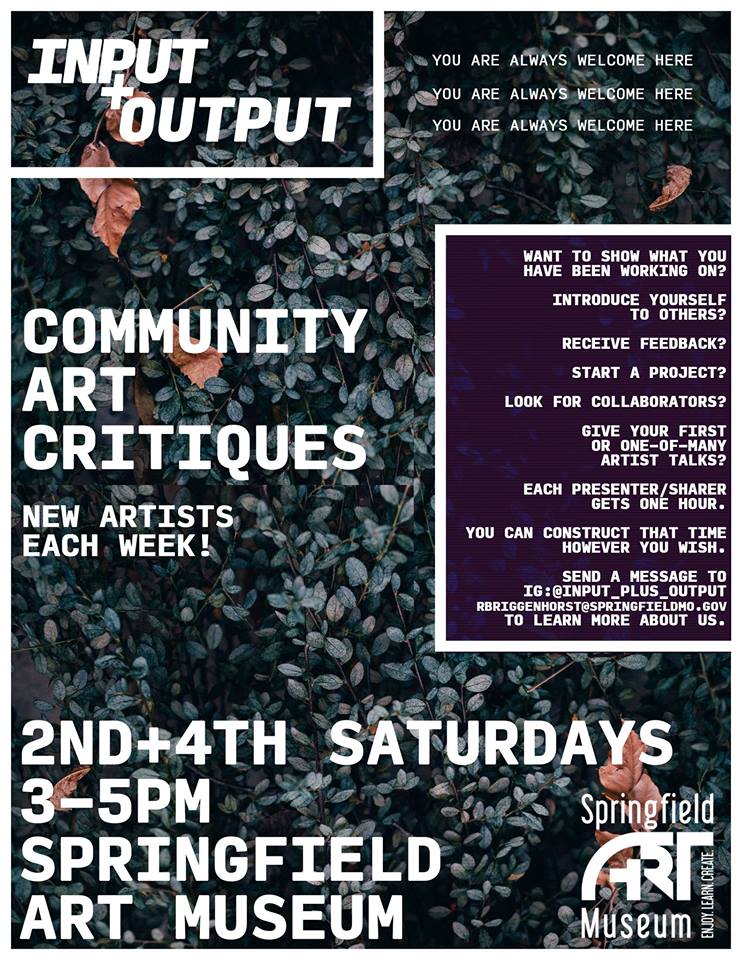
Building a Stronger Community Through Criticism
By Danny R.W. Baskin
Here in the Ozarks, our art communities are small but strong. Collaboration is abundant, space is relatively affordable, and the general public are enthusiastic about art-based events. A major difficulty, though, is allowing for healthy growth and dialogue through criticism.
The act of sharing one’s art with an audience creates a conversation between artist and viewer. As one-sided conversations are in fact no real dialog at all, we as viewers have authority to speak with the works. Criticism can involve voicing agreements or disagreements, questioning particular choices, adding insight that might be hidden or unassumed, and assessing whether the works are what they say they are or do something for or against the general sensibilities of a community. For instance: if an artist says their work is about “inclusion” but the work has no sentiment toward the inclusiveness that is most often discussed today (i.e. socio-political equality of marginalized communities in America and beyond), criticism can help bring to light this discrepancy for both the audience and the artist, whose work might improve by understanding what it lacks. Criticism could also be based in aesthetics rather than conceptual content in order to let an artist know specifically what they might need improvement upon within their craftsmanship. Criticism within art is not meant to hurt or divide. Rather, it is meant to strengthen weak spots–to give insight into works and their many layers.
An essential aspect for art criticism to work in any community though, is for artists and others to be willing to listen to the criticism and openly engage within it. We must not only give criticism, but we must ask for it. If there is no urge for evaluation, criticism can be viewed as simply negative commentary; a gesture of malice rather than a gesture of care. This can strain relationships in a small community and can make collaboration and advancement arduous.
Criticism builds strengths in community by creating new goals and furthering growth, but it also gives people and audiences the freedom to have open dialogue about difficult topics. To be the only person in a crowd not standing in ovation is hard, and makes for opening up about concern difficult. If there are serious issues that need to be addressed, a community open to criticism has a better chance of hearing those issues, of having someone feel comfortable enough to bring them up to either author or audience.
Art is often most powerful when it is a question rather than an answer: an entryway into a conversation rather than an ending to one. Here, we must try our best to maintain that conversation and uplift it.
*The cover image is a flyer for Input + Output, an artist critique group based out of Springfield, MO.
